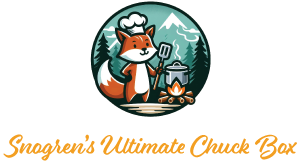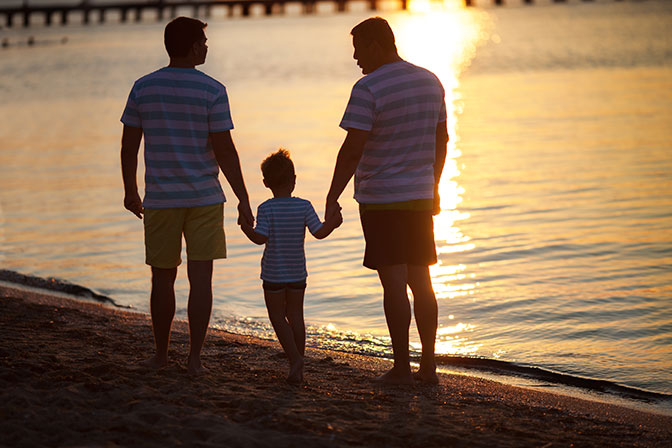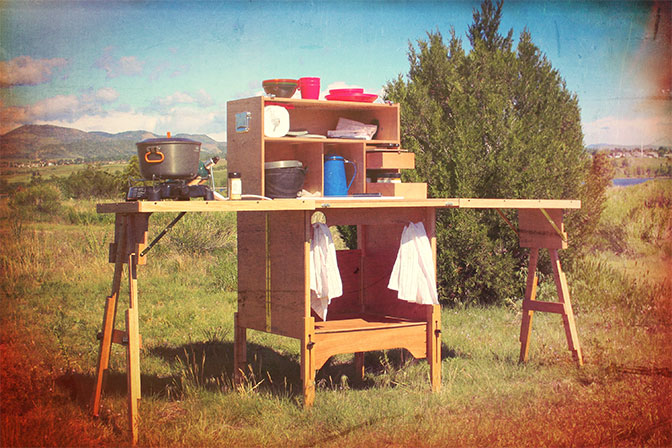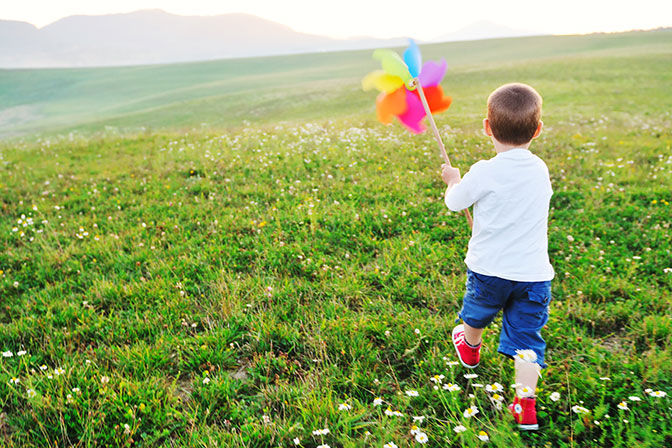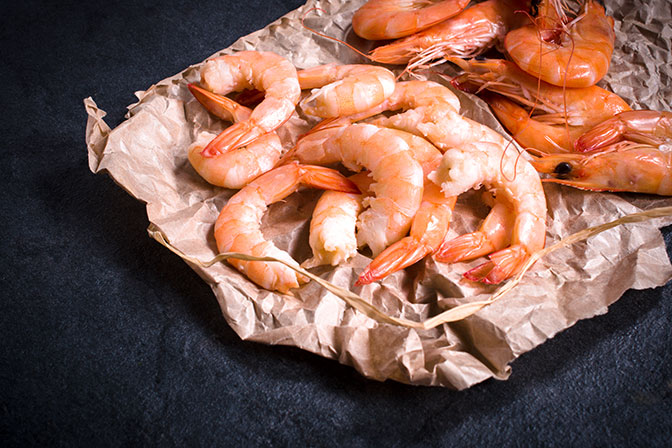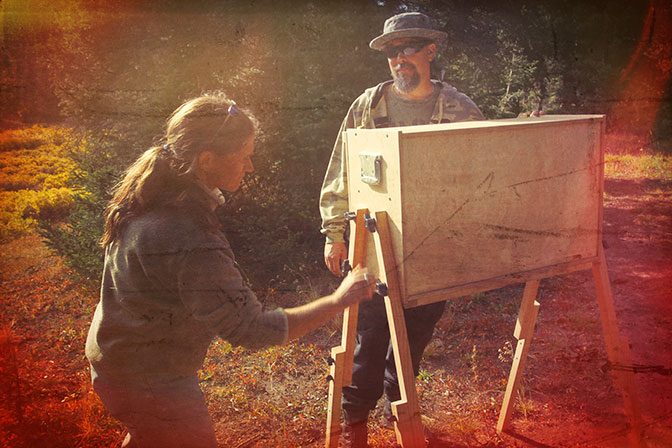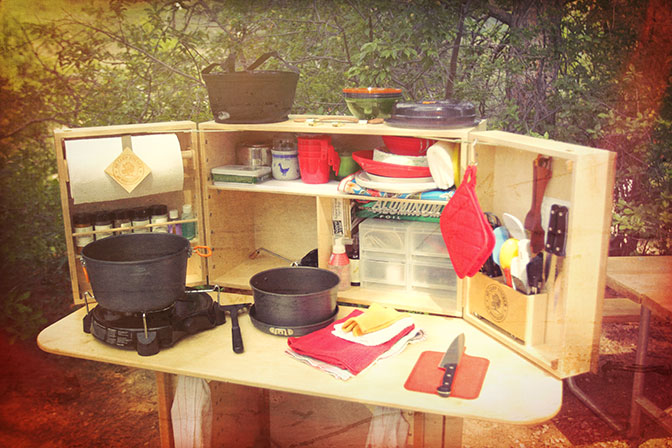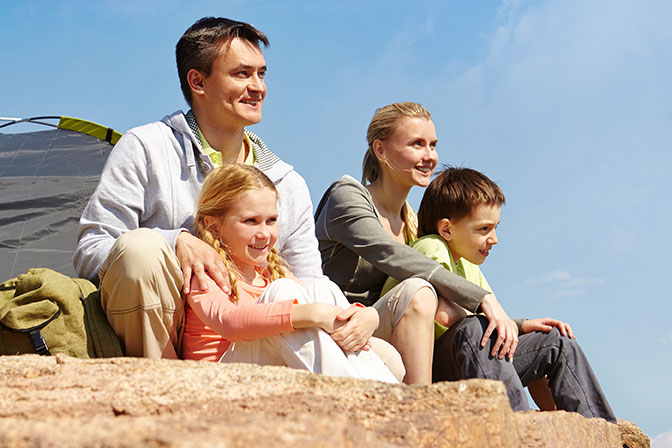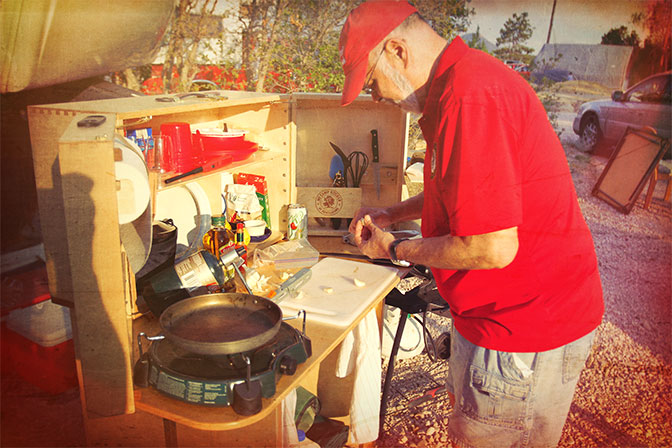My earliest memories are of waking up at 2:00 am and getting in the car (which my dad had already packed for our annual two weeks of camping at Sheep Creek, Kings Canyon, California) and then singing or counting animals or seeing how many state license plates my brother and I could find (with mom’s help). That time spent in the car together was just the beginning. We spent the days swimming, horseback riding, hiking, fishing, and playing hide and seek in the dark forest, sleeping under the stars and never being afraid. My brother, cousins, and I are now (65+ years later) the best of friends. I think these experiences together of total freedom are so important. Take your kids camping so you can start creating their wonderful childhood memories!
Shipping options
International shipping
 If you are an international customer, please email us with your shipping address, and we will send you a shipping estimate. This may take up to two days.
If you are an international customer, please email us with your shipping address, and we will send you a shipping estimate. This may take up to two days.
Upcoming events
TBD
Stay tuned for upcoming events featuring My Camp Kitchen products
Stay in the loop
 Get cooking tips, stories, and news about products and events by signing up for our newsletter.
Get cooking tips, stories, and news about products and events by signing up for our newsletter.
I can’t tell you how many times I have heard from people seeing our products for the first time, “Wow, I remember when my grandfather built one of these for camping. My brother (or sister, or aunt, or … ) still uses it today.” That, in an nutshell, is a chuck box: a kitchen cabinet made of solid wood (historically heavy plywood) and built to last through the generations.
The My Camp Kitchen Summit and Outdoorsman are the chuck boxes of your dreams. We build them with Baltic Birch plywood, which is very lightweight while maintaining its strength. It is also beautiful, with a gorgeous golden grain. We use brass and zinc-plated hardware, creating a sleek and high-quality look. Our kitchens are built to be passed on from generation to generation.
Share with friends:
- Click to share on Facebook (Opens in new window) Facebook
- Click to share on X (Opens in new window) X
- Click to share on LinkedIn (Opens in new window) LinkedIn
- Click to share on Tumblr (Opens in new window) Tumblr
- Click to share on Pinterest (Opens in new window) Pinterest
- Click to share on Reddit (Opens in new window) Reddit
- Click to email a link to a friend (Opens in new window) Email
We tried to break it! And I mean we really tried. My friend Johnny was kind enough to do the honors.
We have a favorite campsite in the Rockies up above the town of Como, Colorado. There is a great four-wheel drive trail in the mountains just beyond the campsite. This is where we took the Outdoorsman for a ride. You can watch the video at our Videos page.
The Outdoorsman was packed with the normal gear we use on camping trips. This includes a single-burner propane stove, a small propane lantern, a couple of propane canisters, a pot and pan set, utensils, silverware, savory spices, extra-virgin olive oil, balsamic vinegar, paper towels, plates, cups, a Henkel knife set, a number of nonperishable food items, and a bottle of wine.
Sunday morning, Johnny showed up bright and early along with Herb, Matt, and Sarah (three of my kids); John, our videographer and my nephew; my brother Dorraine and his wife, Ruth; and Mike, a good friend from Canada. We packed up the Outdoorsman and strapped it onto the hitch platform Johnny uses to tote extra gear on his Jeep. Herb drove his SUV with John and his video gear. Herb opened the sunroof on his SUV, and John stood on the seat with half of his body and camera outside.
The first couple of miles is a modest gravel road, then we turn off onto a US Forest Service four-wheel drive road. This is when the fun really began. Johnny loves speed and rough rides, so he was right at home going as fast as he could over the rocks and rough terrain and through many water crossings. From the point at which we started on the FS road, it is about 10 miles to the continental divide overlooking Breckenridge. My brother, five years my senior, drove Sarah’s truck to the divide—a major feat for someone who doesn’t like to drive. He’s no wimp, that’s for sure.
Neither was the Outdoorsman. It was exposed to it all—dust, water, and a rough beating. You have to see the video to appreciate it.
After reaching the summit, we paused for a breather and took photos of the spectacular views. Then we headed back down just below tree line to our favorite campsite.
It was then that we set up and opened the Outdoorsman and found everything was intact!! Nothing broke, and it was dry inside despite all of the water it had been exposed to. Some dust did find its way in, but nothing that got in the way of cooking a great meal. I was very pleased.
We certainly don’t recommend such abuse on a regular basis, but taking the Outdoorsman four-wheeling with sane drivers is a piece of cake.
My sincerest thanks to everyone who tried so hard to break my kitchen.
Happy camping and cooking,
Richard
Share with friends:
- Click to share on Facebook (Opens in new window) Facebook
- Click to share on X (Opens in new window) X
- Click to share on LinkedIn (Opens in new window) LinkedIn
- Click to share on Tumblr (Opens in new window) Tumblr
- Click to share on Pinterest (Opens in new window) Pinterest
- Click to share on Reddit (Opens in new window) Reddit
- Click to email a link to a friend (Opens in new window) Email
I just read an article in the newspaper this morning about a 100-year-old woman who attributes her long life to listening to her mom’s advice to “go outside and play.” Where safer and better to play outside than camping? Oh, the freedom and fantasies—I remember it well!
Share with friends:
- Click to share on Facebook (Opens in new window) Facebook
- Click to share on X (Opens in new window) X
- Click to share on LinkedIn (Opens in new window) LinkedIn
- Click to share on Tumblr (Opens in new window) Tumblr
- Click to share on Pinterest (Opens in new window) Pinterest
- Click to share on Reddit (Opens in new window) Reddit
- Click to email a link to a friend (Opens in new window) Email
Yep, it’s easier than you think with the right gear, and of course, a Summit or Outdoorsman helps tremendously. This past summer while camping here in Colorado, we made a video of my dad, Richard, making Soused Shrimp (aka Shrimp Scampi) with a twist. You’ll find the recipe on our Videos page. Enjoy!
Share with friends:
- Click to share on Facebook (Opens in new window) Facebook
- Click to share on X (Opens in new window) X
- Click to share on LinkedIn (Opens in new window) LinkedIn
- Click to share on Tumblr (Opens in new window) Tumblr
- Click to share on Pinterest (Opens in new window) Pinterest
- Click to share on Reddit (Opens in new window) Reddit
- Click to email a link to a friend (Opens in new window) Email
by Analisa Macias (daughter of Richard and Eleanore Snogren)
As parents, we have goals and expectations of ourselves and our children. But what, really, are we expecting our children to gain from all of our parenting? What do we really want for our kids? What do they need to launch them into a successful and happy adulthood?
We want our kids to be good, smart, respectful, and happy. We want them to make us proud and to feel good about themselves. But in reality, these terms are elusive and subjective. How do you teach someone to be happy? Or good? Often teaching “respect” ends up instead teaching fear and intimidation. Smart is relative and unique to each individual.
Good and happy comes from within, it is implicit in our beings—not a personality trait. Respect for others is treating someone well and as an equal and can only come from a strong sense of self-respect. So as I ponder how to help my children develop a happy, good, smart, and respectful inner self, I often go to fearlessness.
More than anything, I want to help my kids be fearless. I don’t mean literally to feel no fear, but rather to feel unafraid of failure enough to try whatever they feel inclined to try. To give things a shot, to take initiative, to not be afraid of judgment or rejection, and to not fear not being good at something. We learn by being and by doing. And if my kids are not afraid to be and not afraid to do, then they will grow up pretty fulfilled. This will translate into a happy and respectful human being.
Share with friends:
- Click to share on Facebook (Opens in new window) Facebook
- Click to share on X (Opens in new window) X
- Click to share on LinkedIn (Opens in new window) LinkedIn
- Click to share on Tumblr (Opens in new window) Tumblr
- Click to share on Pinterest (Opens in new window) Pinterest
- Click to share on Reddit (Opens in new window) Reddit
- Click to email a link to a friend (Opens in new window) Email
Recently while enjoying a coffee at Starbucks with a friend, we were discussing My Camp Kitchen’s new release, the Outdoorsman.
When I told him we offered a kit the customer could put together and finish themselves, he replied, “That’s great, your customers can use a little ‘sweat equity’ to get high value while saving money.”
Although it usually refers to building up equity or value in a house by doing a lot of work yourself, or in other instances, acquiring ownership in a business by investing labor rather than cash, “sweat equity” fits our new Outdoorsman kit rather nicely.
If you’d like to build some sweat equity while saving money, check out the Outdoorsman kit today!
Share with friends:
- Click to share on Facebook (Opens in new window) Facebook
- Click to share on X (Opens in new window) X
- Click to share on LinkedIn (Opens in new window) LinkedIn
- Click to share on Tumblr (Opens in new window) Tumblr
- Click to share on Pinterest (Opens in new window) Pinterest
- Click to share on Reddit (Opens in new window) Reddit
- Click to email a link to a friend (Opens in new window) Email
I was recently camping in Steamboat Springs with some friends. I brought a Summit with me, of course. Many neighbors came by and were looking at my kitchen, as they are wont to do.
One person in particular had a lot to say about our kitchen. He had an aluminum kitchen set up in his campsite and was really impressed by the stability of My Camp Kitchen’s Summit. Apparently, the aluminum kitchens are wobbly. You’ve gotta be really careful around them—no kids playing and beware in windstorms. He kept pushing the Summit from a variety of angles and could not get it to budge. He was seriously impressed. Fortunately, I had some brochures, so he is going to check us out online.
Share with friends:
- Click to share on Facebook (Opens in new window) Facebook
- Click to share on X (Opens in new window) X
- Click to share on LinkedIn (Opens in new window) LinkedIn
- Click to share on Tumblr (Opens in new window) Tumblr
- Click to share on Pinterest (Opens in new window) Pinterest
- Click to share on Reddit (Opens in new window) Reddit
- Click to email a link to a friend (Opens in new window) Email
How many of you rush to relax with your family? Do you work till 5 or 6 pm, only to come home and make dinner, followed by time spent making sure the kids have done their homework while helping those who haven’t? What time is it then? 8 or 9 pm? Then weekends … between doing chores and driving the kids to their extracurricular activities, when do you have time to stop and relax and just have fun with your children?
Studies show that when families actually plan family leisure activities like camping and let go of all the rushing, they experience increased family satisfaction (Zabriskie & McCormick, 2003) and improved communication (Huff, Widmer, McCoy, & Hill, 2003). The family as a whole even becomes more effective (Wells, Widmer, & McCoy 2004).
As we approach spring and summer—prime camping season—plan your next family campout. And when you get there, let everything else go—no more work or school or errands … just you and the ones you love. Play, relax, and have fun!
References
Zabriskie, R.B., & McCormick, B.P. (2003). “Parent and child perspectives of family leisure involvement and satisfaction with family life.” Journal of Leisure Research, 35(2), 163–189.
Huff, C., Widmer, M., McCoy, K., & Hill, B. (2003). “The influence of challenging outdoor recreation on parent-adolescent communication.” Therapeutic Recreation Journal, 37(1), 18–37.
Wells, M. S., Widmer, M. A., & McCoy, J. K. (2004). “Grubs and grasshoppers: Challenge-based recreation and the collective efficacy of families with at-risk youth.” Family Relations, 53(3), 326–333.
Share with friends:
- Click to share on Facebook (Opens in new window) Facebook
- Click to share on X (Opens in new window) X
- Click to share on LinkedIn (Opens in new window) LinkedIn
- Click to share on Tumblr (Opens in new window) Tumblr
- Click to share on Pinterest (Opens in new window) Pinterest
- Click to share on Reddit (Opens in new window) Reddit
- Click to email a link to a friend (Opens in new window) Email
I am passionate about a number of things in life, two of which are camping and cooking. In all my years as an engineer working long hours, it was the weekend camping trips and weeklong camping vacations with my family that re-energized me for the weeks to come.
Until recently, we were tent campers. I have always looked for ways to become more organized and to make it easier to get ready, easier to set up camp, and of course easier to come home and get ready for the next trip.
We started out with five kids in a 1961 Ford Falcon, and we had to be organized just to fit. That is how My Camp Kitchen got started.
There is no greater joy than to be able to share the things one is passionate about with others. Joining my engineers’ eye for detail with my love of nature and cooking has enabled me to share with the world a really simple and organized way to cook outdoors while keeping all the kitchen gear and supplies right where you want them whenever needed.
I hope you all enjoy our outdoor kitchen systems as much as we do!!
Happy camping!
Richard Snogren
Share with friends:
- Click to share on Facebook (Opens in new window) Facebook
- Click to share on X (Opens in new window) X
- Click to share on LinkedIn (Opens in new window) LinkedIn
- Click to share on Tumblr (Opens in new window) Tumblr
- Click to share on Pinterest (Opens in new window) Pinterest
- Click to share on Reddit (Opens in new window) Reddit
- Click to email a link to a friend (Opens in new window) Email
Get in touch
 Want to find out more about our products or speak directly with us? No, problem! Fill out our Contact form or call us:
Want to find out more about our products or speak directly with us? No, problem! Fill out our Contact form or call us:
- Adam, Owner
704.425.5526 (cell)
We look forward to hearing from you!
—Adam Eckberg & Team
“My Camp Kitchen was the central spot for all the food and drink as everyone found it to be a great camping asset. It was at a comfortable height for preparation, and all the tools I needed were right there in easy reach. My Camp Kitchen is a wonderful product that I will continue to enjoy and tell everyone about.”
“We love our Camp Kitchens! Our old patrol boxes were built from plans. They were very heavy, and the legs were hard to assemble. Our Camp Kitchens were easy and fun for a group of Scouts to put together. The instructions were easy to follow, and the parts were well-organized. Everything fit together perfectly. The Camp Kitchens are well-designed and much easier for our Scouts to carry. All of our necessities fit neatly inside. In addition, set-up is easy when we arrive at camp. Thanks, My Camp Kitchen!”
“Wow! I just received the camp kitchen, and I have to say, the pictures don’t do it justice! Amazingly designed and built! Great product! I’ll send you some pics from the campsite! Thanks again, Richard!”
“Everything worked just great. You can see how much I have stored in the box—literally everything I need for cooking/preparation of food. The couple I went camping with were really taken with the unit—thought it was the greatest thing since sliced bread!”
“I just received my Mini Chef last Friday, and it’s terrific. And it was like Christmas finding the extras inside! A really nice touch. Thank you.”
“For a beautiful cooking experience, the artfulness and craftsmanship of the Summit WOWS. It feeds the soul.”
“The Camp Kitchen is just absolutely perfect and fits exactly how we wanted it to in our four-wheel pop-up camper. It is really well-thought-out, and I’m SO glad I didn’t try to build a DIY as I was previously planning. You have put a lot of camping experience into every little detail. And it is built for an air drop! It’s funny how excited my wife and I are about The Outdoorsman kitchen box, considering we have tens of thousands of dollars tied up in all sorts of technical outdoor gear. Your camp kitchen is truly worth every penny. Congrats on a classic.”
“I want to tell you how delighted I am with the camp kitchen. We went camping this past weekend and found cooking to be easy and storing the gear convenient. Thank you also for the towels, coffee filters, and wine glasses. We used these as well. I will recommend this unit to everyone I know who camps.”
“Just finished putting together your kit, and I really enjoyed the project.”
“I love cooking with My Camp Kitchen. I have all that I need right there. Cooking outdoors is much more enjoyable than in our trailer.”
“You make an awesome product! … Arrived home today to My Camp Kitchen waiting on my porch. Couldn’t wait to open it up and see the new improvements. I could not be happier!! The new legs are fantastic!! And having the extensions be able to stay with the box and not have to tote separate is just the ticket. We just placed our three kids’ names in a hat and drew the lucky winner of our old unit. Our oldest daughter won and promised to share with the other two and keep it in the family always. Thanks again for making a great quality product that we can be proud to pass on.”
“Nothing competes with camping. There is no remote-control camping. So when you get a kid out there making a fire, prepping foil dinners, roasting marshmallows, playing silly campfire games, and walking around in the dark with a flashlight, he is thrilled in a way that cannot be duplicated by technology. Go, Dad!!!!”
“We are so pleased with the custom table [designed to fit in our Teardrop trailer]! When my husband opened it and put it together, he said he wanted to use it as a standing desk in his office!! I am just so pleased to have such a beautifully designed and high-quality camp kitchen! I value these qualities in my NON-camping life … so it was wonderful to find that you were making something like this as most of the camping stuff out there is just awful!!! It has also been a great pleasure to work with you all. Thank you for all that you do!”
“Wow! Awesome! Really Cool! That’s the impression I have with The Outdoorsman. Very well-constructed, and I think it will work perfectly for our Scouting needs. Easy to set up and surprisingly light. Thanks so much.”
“First of all, let me say I LOVE what I see and hear from your products. We are a Scouter family with two boys 13 and 11 active in our LDS Scout troop and a secondary traditional troop here in the San Francisco Bay Area.”
“We are enjoying our [custom tailgater] bar—getting so many compliments and looks! It is great.… Thank you!!”
